Recreating the Country blog |
 The bush cafe was a welcome site The bush cafe was a welcome site Setting the scene - the bush cafe It had been a long exhausting drive and seeing the sign to ‘The bush café’ was as welcome as stumbling into a shady oasis in a sun scorched desert. The gravel drive wound through the woodland trees until the vegetation opened on a tranquil scene. Here in this out-of-the-way place was a beautiful mud brick café perched on a hillside overlooking a meandering tree-lined creek below. The Greys wearily climbed out of their dust coated SUV, stretched and walked through the garden into the cafe. They were soon to discover that this was a café like no other. The beautiful coffee/hazelnut aromas emanating from the country kitchen were coming from roasted acacia seeds.  Formica exsectoides collecting seed. Courtesy of Scienceblog Formica exsectoides collecting seed. Courtesy of Scienceblog Putting a value on nature’s gifts There are not many things in life that are free except perhaps the air we breathe and bounty of seeds provided by the plants in our parks and gardens. Each year plants flower and set seed but most of this precious commodity falls to the ground where it either decomposes or becomes food for small mammals, birds and insects. Far less than 1% germinates and grows into new plants. Two creative thinking Victorian families have begun to harvest some of this natural abundance. One is turning it into delicious food while the other has recognised its scarcity and value to landscapers restoring natural environments. 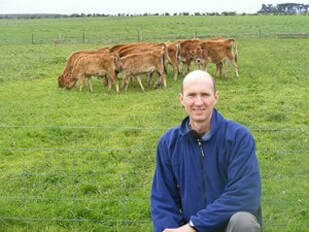 Anthony Leddin manages Eumerella Run Wattle Seeds Anthony Leddin manages Eumerella Run Wattle Seeds “Wattleseeds are the next macadamias”. Anthony Leddin, a qualified plant breeder, is pushing the boundaries with wattle seed production at 'Eumerella Run Wattle Seeds'. Anthony has applied his training and practical skills to set up a commercial production area of 12 hectares at Yambuk, 20 km northwest of Port Fairy, Victoria. He predicts that wattleseeds will be the next macadamias, an Australian success story which is now a worldwide sensation. Roasted and ground wattleseed is well known for its nutty flavour in icecream, but it is also becoming more popular as a gluten free and protein rich additive to biscuits, cakes and breads. Its delicious rich flavour is suited to pancake batter and muffins as well as desserts like mousse, crème brulee and anglaise. Did you know that there are now thirteen boutique beers that boast wattleseed as an ingredient?  Barons Black Wattle Original Ale (embellished description alert) is flavoured by native Australian roasted wattle seed. This ale is described as having a rich amber colour and a base malt flavour of toffee and caramel. The roasted wattle seed rounds out the offering with a unique taste that hints of hazelnut, chocolate and mocha. It is described as a full bodied, full flavoured beer that is surprisingly smooth with an amazingly silky finish.  Beyond The Black Stump Wattle Seed Limited Release Beer (embellished description alert) is described as a traditional strong ale brewed with native Black Wattle seed, giving it ‘sweet hazelnut notes with a hint of vanilla’. It is reported to be easy-drinking with a subtle sourness Swamp Wattle and Coastal Wattle Anthony has focused on two species of wattle, Swamp Wattle, Acacia retinodes, from the Halls Gap area and Coastal Wattle, A. sophorae, a salt wind tolerant local species that was eaten by the Gunditjmara people, the traditional owners of southwestern Victoria. Wattleseed as well has being protein rich, also is a good source of Vitamin D, selenium, magnesium, calcium, iron and zinc. Of the almost 1000 named Australian wattle species, the seeds of over 20 were used as food by Indigenous Australians and over 100 species were harvested for their edible gum, roots, witchetty grubs and manna - produced by lurps living on the wattle leaves. The bark, leaves and wood of some species were used as medicinal remedies. To read more about wattle uses and ecology you could read 'Acacias - the cafes of the bush' See also this link to a pdf ‘Aboriginal use of Wattles’ by Norman Morrison  Harvested wattle seed and pods Harvested wattle seed and pods Income from wattle seeds Anthony has planted 5,000 trees, alternating the two species as a strategy to reduce salt wind damage to the Swamp Wattles. His planting layout and pruning is designed to enable mechanical harvesting with a modified grape harvester, though most commercial harvesting of wattle seed is presently done by hand. He estimates that the wattle harvest will yield a conservative 250kg/ha, though 1 tonne/ha has been suggested as possible. The current value of one kilogram of wattle seed is $45 or a conservative $11,250/ha. This scales back to 0.5kg/tree or $22.50/tree. The value of this seed can be enhanced by roasting and grinding to a flour. The flour can also be turned into wattleseed paste for added convenience and to develop the maximum strength of flavour. These very drought hardy wattles fix their own nitrogen, so they don’t need to be fertilised, mulched or watered, which makes them a very low maintenance and a low cost food crop. At 'Eumerella Run Wattle Seeds' the wattles are organically grown so there is no use of herbicides or pesticides. To read more about the commercial potential of wattle seeds click here Anthony is happy to take orders for acacia seed and can be contacted directly at [email protected] Wattle Seeds Australia's website provides practical information about growing and producing wattle seed as a nutritious food. Other Australian native foods being grown for food are ; Anise Myrtle, Bush Tomato, Davidson Plum, Desert Lime, Finger Lime, Kakadu Plum, Lemon Aspen, Lemon Myrtle, Muntries, Mountain Pepper, Quandong and Riberry. Click here to read more about them and their potential on this informative website  The open paddock in February 2006 The open paddock in February 2006 Victorian Native Seed Converting an open paddock into a woodland or forest is a wonderfully satisfying process. Particularly when it mimics patterns seen in nature that make a woodland irresistible to wildlife. Click here to read how its done Two Victorian visionaries have taken this process an important step further. They set out to revegetate a 5 ha paddock to attract wildlife and to supply the local community with a precious commodity that was in short supply – indigenous seed. Click here to visit the 'Victorian Native Seed' website Libby, a Botanist with 30 years experience in Natural Resource Management and Steve a Geographer/Historian with 20 years practical experience in land management, have combined their skills to plant an open landscape with an extraordinary diversity of local plants. These plants range from canopy trees like gums (four species), through understorey trees (Silver Banksia & Drooping Sheoak), an assorted mix of indigenous shrubs, grasses and herbs. They now have 83 species in their seed production area and have identified a further 128 species in their adjoining bush block. Some of these are rare and threatened. 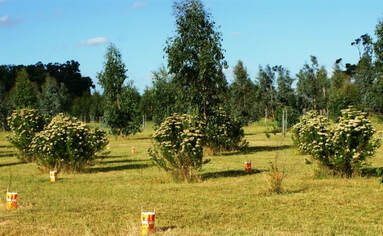 A more recent photo - an open paddock no longer A more recent photo - an open paddock no longer Their motivation for this unique enterprise was as much to protect the local remnant bush as it was to generate an income. They focused on species that were difficult to collect in the wild or that were fragmented, a fate that has affected many of our plant species that were once part of a broad and connected landscape. Putting in enough plants to provide a solid genetic foundation for their product meant they had to plant large numbers of the same species in clumps. Botanists recommend a minimum of 50 plants to provide an adequate gene pool For example the now rare Yarra Gum, Eucalyptus yarraensis has 74 trees in its plant community. The rare tree form of the Silver Banksia, Banksia marginata has 311 plants in various clumps. These now produce reliable quantities of seed every year. A locally rare shrubby hakea called Bushy Needlewood, Hakea decurrens has 95 plants in clumps to create plant communities. Some of the beautiful rare and endangered herbs they have planted are Pussy tails, Ptilotus spathulatus, Swamp Billy-buttons, Craspedia paludicola, Matted Flax-lily, Dianella amoena and Hoary Sunray, Leucochrysum albicans. ‘All plantings (apart from the Eucalypts) were done by mixing up groups of the same species. This is to give a natural look to the planting while still making the seed collection easier because the same species are in groups together’ (Libby pers.com) Because eucalypts, banksias and hakeas are pollinated by birds and insects their clumps can be spaced by hundreds of meters, allowing for the long distances these pollinators will fly when they get a taste for a particular flower. A new wetland system The seed production area also includes a newly created creek that drains the house garden in wet weather and feeds into a new wetland. This project provides the ideal environment for riparian plants that are usually found along waterways. Here they have planted River Bottlebrush, Callistemon sieberi (279), River Tea-tree, Leptospermum obovatum (202), Australian Buttercup, Ranunculus lappaceus (100) plus Spiny-headed Mat-rush, Lomandra longifolia and a local Flax-lily, Dianella sp.  Harvested seed drying in the sun Harvested seed drying in the sun Overlooked and undervalued - maintenance One critical job that’s often overlooked in revegetation is maintenance. Newly planted trees and shrubs have to be protected from invading weeds for up to two years until they fully establish. To quote Libby from her website; ‘The seed production area requires constant maintenance. Initially the plants were sprayed around with glyphosate every year to control the long weed grasses. Now to avoid potential harm to frogs and native grasses, leaf litter is collected when we do fire control work around the house area. This is spread thickly around the small plants. Large plants now produce enough of their own litter to reduce weed growth.' Libby and Steve took the precaution to rabbit proof fence the whole property, though kangaroos remain a constant challenge. Just a few species have needed added protection from Roo damage – Silver Banksia, Drooping Sheoak and Flax-lilies. Swamp Wallabies, usually difficult to manage on revegetation sites, have fortunately kept to the denser cover of the nearby forests and woodlands. 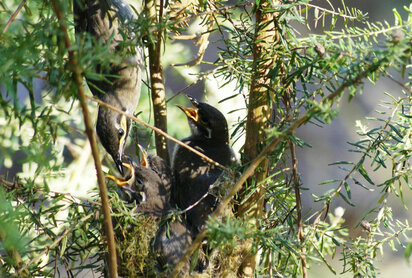 Yellow-faced Honeyeater nesting in a cassinia Yellow-faced Honeyeater nesting in a cassinia Reaping the rewards – lots more birds. One of the most appreciated ‘ticks of approval’ for revegetation projects comes from visiting wildlife. At Victorian Native Seed there has been at least a doubling of family groups of Blue Wrens and many species of honeyeater which are also staying longer than before. Interestingly the Yellow-tailed Black Cockatoos are really enjoying the seeds on the hakeas and banksias. Individual cones are now bagged to save enough for seed sales. Victorian Native Seed has an enlightening website full of resources about the plants they grow and how to germinate the seed. They have also set up some creative bird survey sites at ponds on their properties - Click here to be enchanted by film footage from their hidden cameras
3 Comments
Peter
26/4/2019 08:56:34 am
Good luck to those who manage to harvest wattle seeds for commercial gain. Are there no parrots in your area? King parrots and rosellas always harvest mine.
Reply
Steve
26/4/2019 09:18:21 am
Hi Peter,
Reply
2/11/2021 03:30:42 pm
Diversity in any revegetation project is important. It's great to see them creating a diverse yet profitable solution.
Reply
Leave a Reply. |
Click on the image below to discover 'Recreating the Country' the book.
Stephen Murphy is an author, an ecologist and a nurseryman. He has been a designer of natural landscapes for over 30 years. He loves the bush, supports Landcare and is a volunteer helping to conserve local reserves.
He continues to write about ecology, natural history and sustainable biorich landscape design. 
|

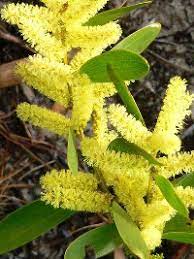


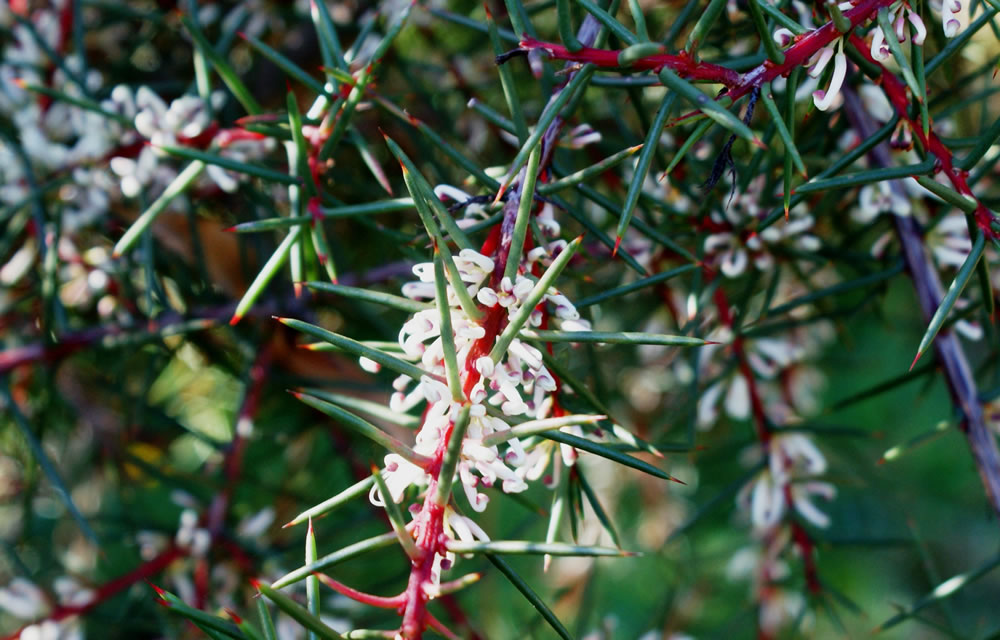
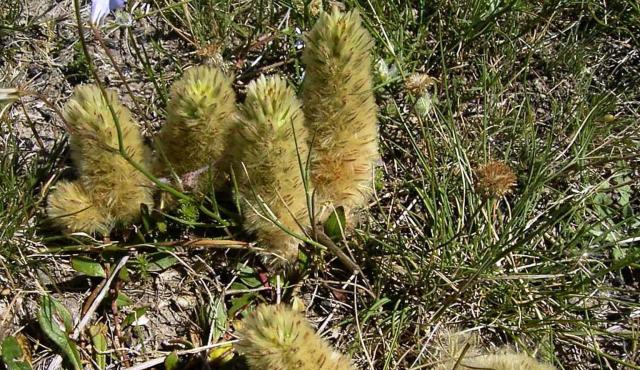

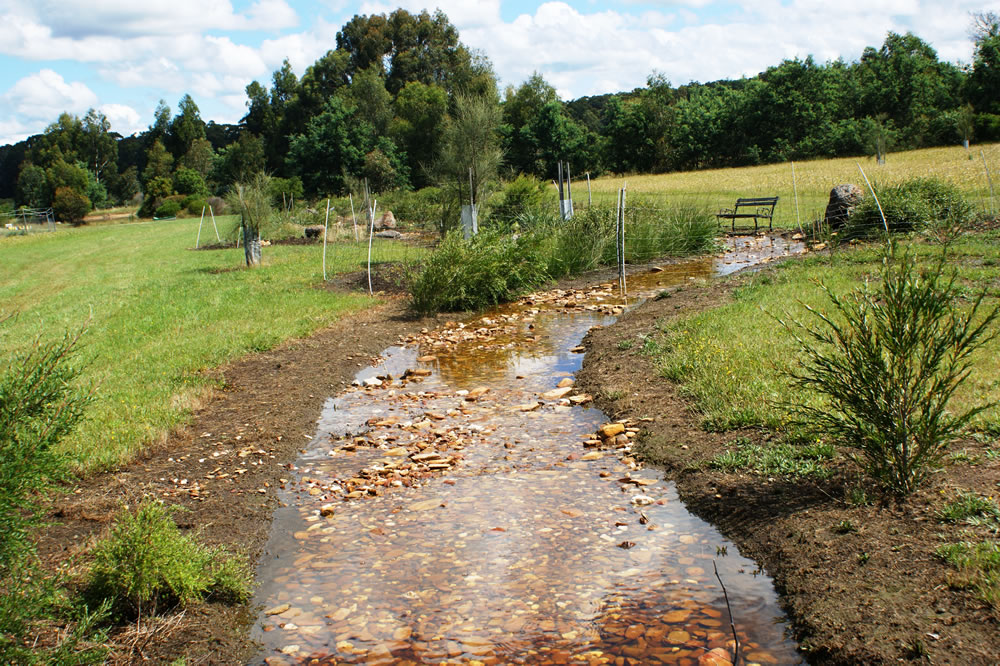



 RSS Feed
RSS Feed
